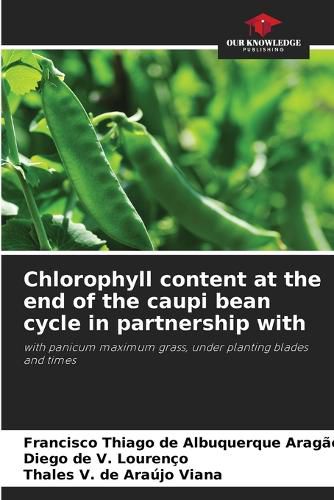Readings Newsletter
Become a Readings Member to make your shopping experience even easier.
Sign in or sign up for free!
You’re not far away from qualifying for FREE standard shipping within Australia
You’ve qualified for FREE standard shipping within Australia
The cart is loading…






The chlorophyll index present in cowpeas in the final phase of production was evaluated in an experiment carried out in the experimental area belonging to the Agricultural Engineering department of the UFC, in Fortaleza - Ce, Brazil, with an experimental design in randomized blocks and subdivided plots, the plots being made up of the treatment of different blades in relation to the evaporation of the class A tank (ECA) ( 0.25; 0.50; 0.75; 1.00; 1.25 times the ACE) and the sub-plots were made up of the treatment times for transplanting the grass (0; 5; 10; 20 DAEF - Days after bean emergence. ), with each treatment comprising three replicates. Observing the effect of the blades evaluated, those equivalent to 0.75 and 1.00 times ECA stood out, which showed the highest chlorophyll index in the Caupi bean leaves. As for the weed insertion time treatment, the 10 and 20 DAEF times stood out, showing that the legume's competition with the grass directly affects chlorophyll production in the bean plant.
$9.00 standard shipping within Australia
FREE standard shipping within Australia for orders over $100.00
Express & International shipping calculated at checkout
The chlorophyll index present in cowpeas in the final phase of production was evaluated in an experiment carried out in the experimental area belonging to the Agricultural Engineering department of the UFC, in Fortaleza - Ce, Brazil, with an experimental design in randomized blocks and subdivided plots, the plots being made up of the treatment of different blades in relation to the evaporation of the class A tank (ECA) ( 0.25; 0.50; 0.75; 1.00; 1.25 times the ACE) and the sub-plots were made up of the treatment times for transplanting the grass (0; 5; 10; 20 DAEF - Days after bean emergence. ), with each treatment comprising three replicates. Observing the effect of the blades evaluated, those equivalent to 0.75 and 1.00 times ECA stood out, which showed the highest chlorophyll index in the Caupi bean leaves. As for the weed insertion time treatment, the 10 and 20 DAEF times stood out, showing that the legume's competition with the grass directly affects chlorophyll production in the bean plant.